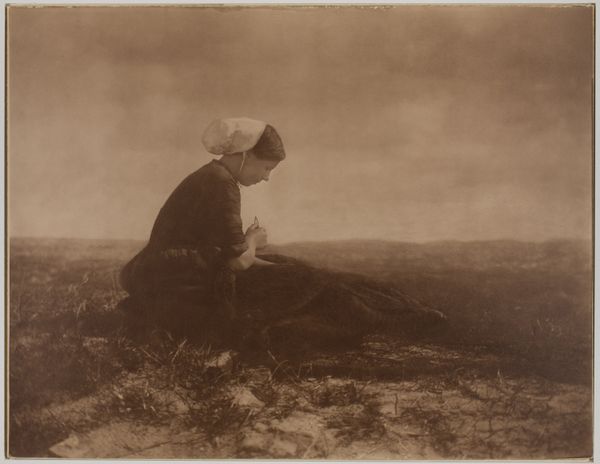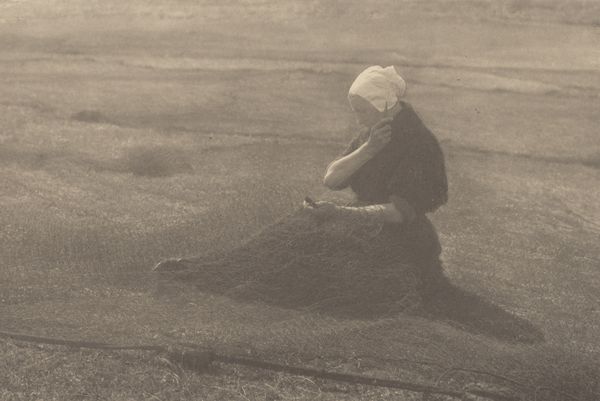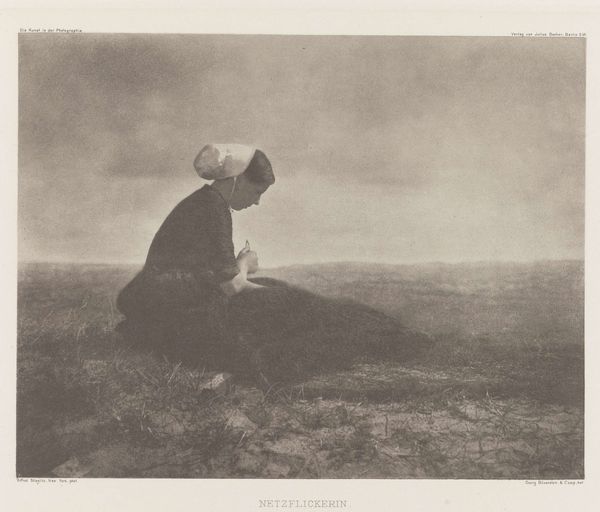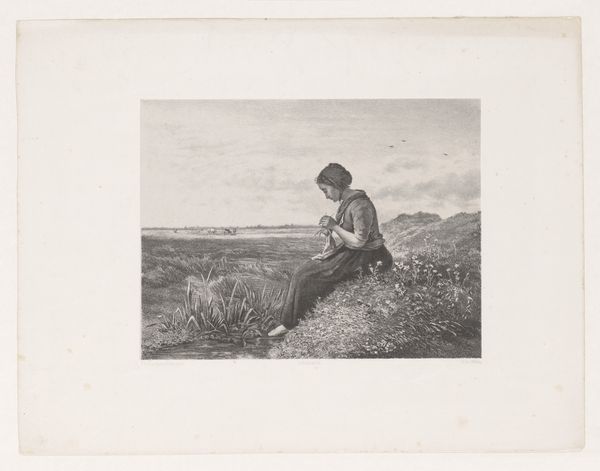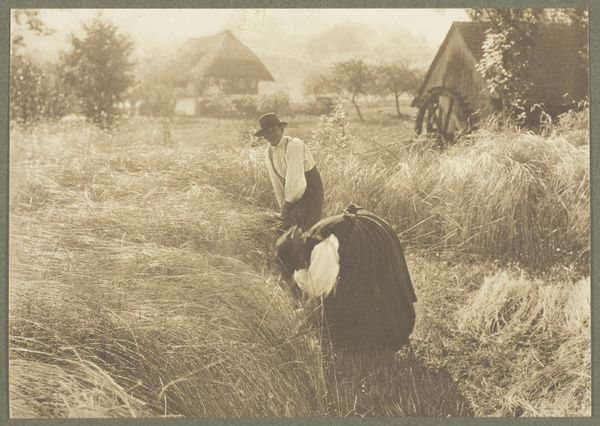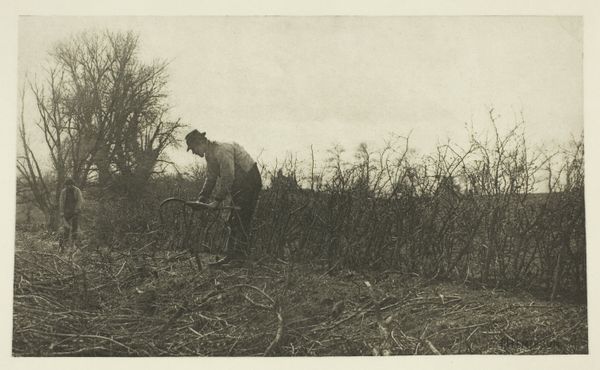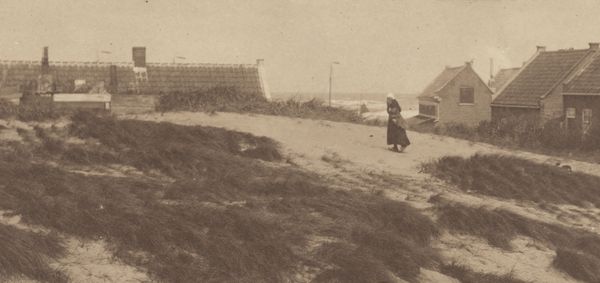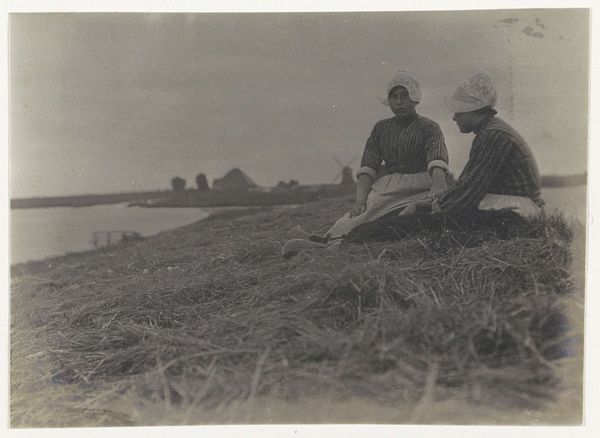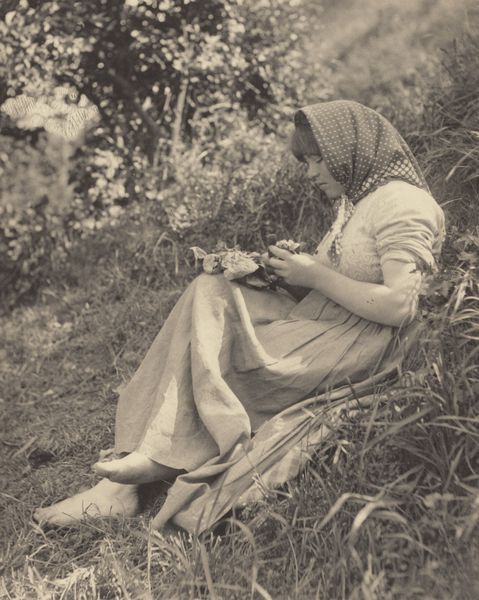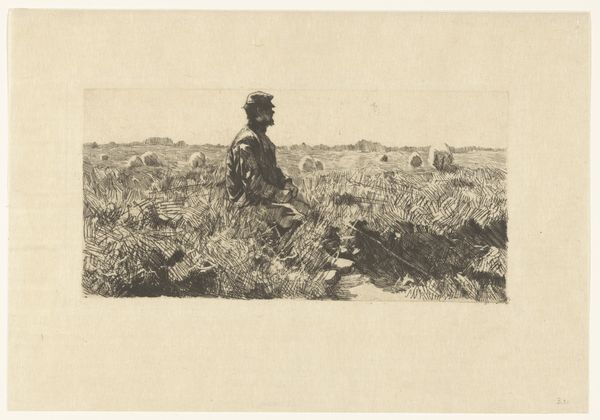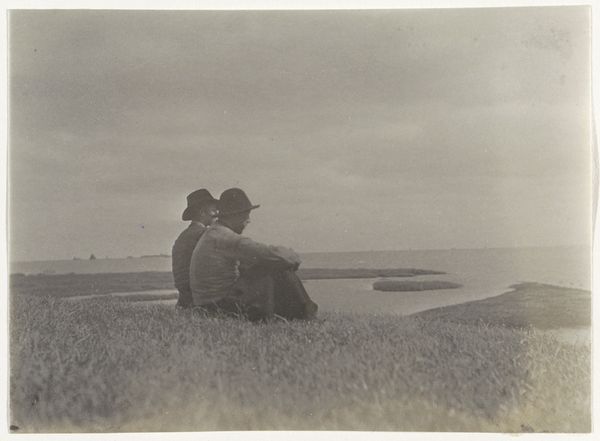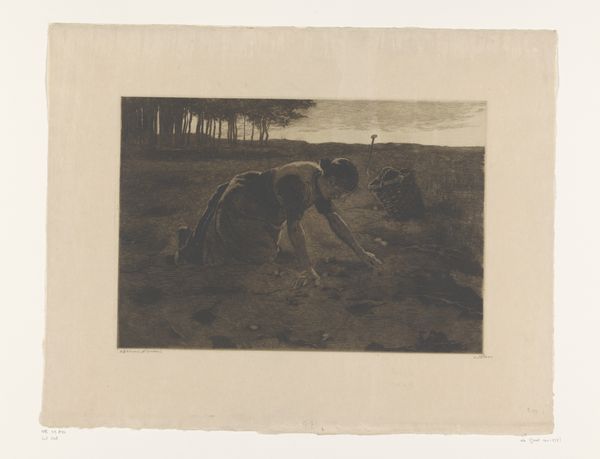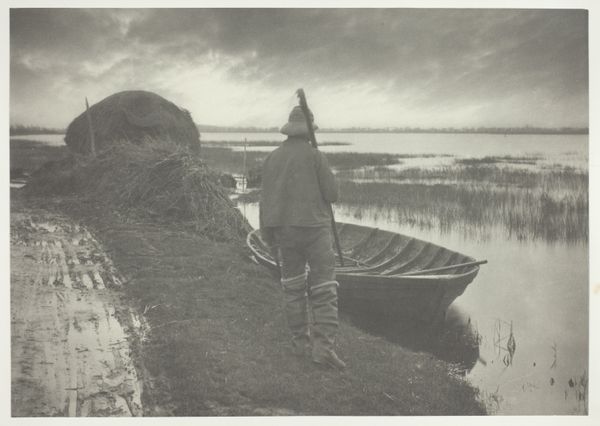
#
desaturated
#
black and white photography
#
photo restoration
#
black and white format
#
charcoal drawing
#
old-timey
#
monochrome photography
#
19th century
#
outdoor activity
#
shadow overcast
Dimensions: sheet (trimmed to image): 15.5 × 20.9 cm (6 1/8 × 8 1/4 in.) page size: 27 × 33.8 cm (10 5/8 × 13 5/16 in.)
Copyright: National Gallery of Art: CC0 1.0
Curator: This is Alfred Stieglitz's photograph, "Mending Nets," likely taken between 1894 and 1896. Editor: It’s incredibly somber. The limited tonal range and low horizon evoke a sense of loneliness. It seems to drain all color from the scene and all vitality from the figure. Curator: Well, Stieglitz was a major proponent of Pictorialism. He used photography to express artistic vision, employing techniques that mimic painting or drawing. This specific work emphasizes the texture of the cloth and the overall tonal unity, really elevating what might have just been documentation into something much more profound. He challenges the notion of photography as purely a tool for capturing objective reality. Editor: I think that it does capture a reality, though, doesn’t it? Consider the woman and her labor. The netting sprawled around her suggests that it’s hard work, essential work, for sustenance in her community. Also, think about the viewers. Stieglitz captured this image when photography was becoming increasingly popular. He presents a carefully crafted image of labor for a growing public audience that’s also undergoing profound socio-economic changes. Curator: Absolutely, and the print quality is quite important. I wonder about the printing process itself. We're talking about gelatin silver prints, often hand-manipulated, which blurred the lines between photography and craft. The labor that the fisherwoman represents is echoed in the hands-on work Stieglitz performed in the darkroom. There's a definite materiality at play, a crafted object rather than simply a mechanically reproduced one. Editor: Right. We can't ignore the cultural context either. Photography was becoming an important tool in shaping narratives about society, about labor, and about the lives of everyday people. I think it’s intriguing to analyze this work alongside his promotion and curation of photography as fine art at venues like 291 Gallery. It asks us, "Who is seen, how are they seen, and for what purpose?” Curator: That's a great point. Looking closely at the tonal relationships of light, of dark, the texture, and that careful handwork – one starts to realize this piece challenges many preconceptions around photography and art itself. Editor: Considering its context and lasting power to generate important reflections and socio-economic queries—it does offer a great lesson to viewers and audiences still today.
Comments
No comments
Be the first to comment and join the conversation on the ultimate creative platform.
